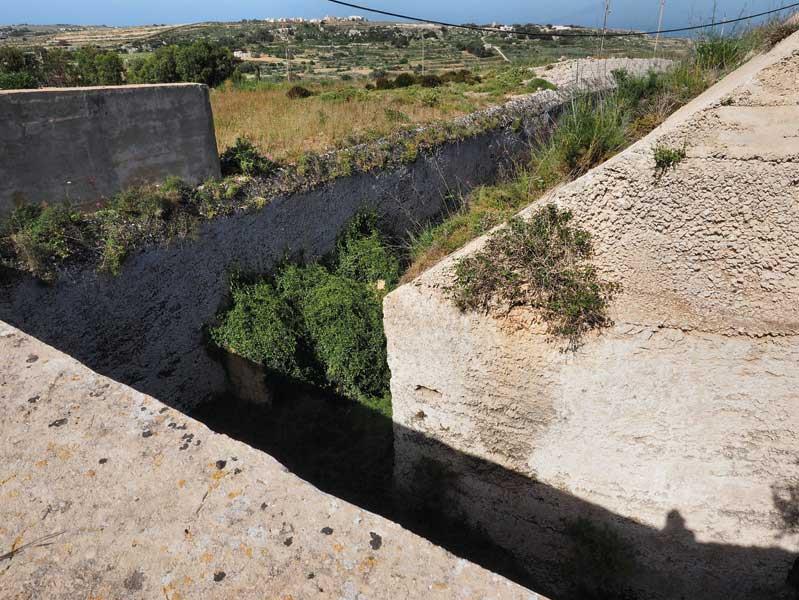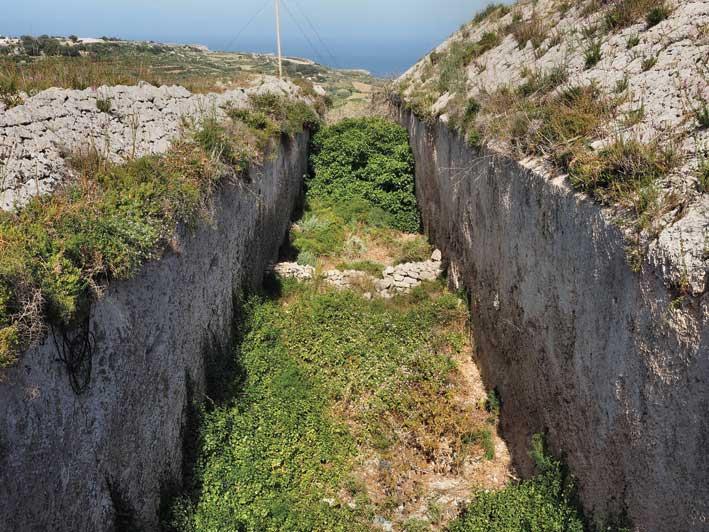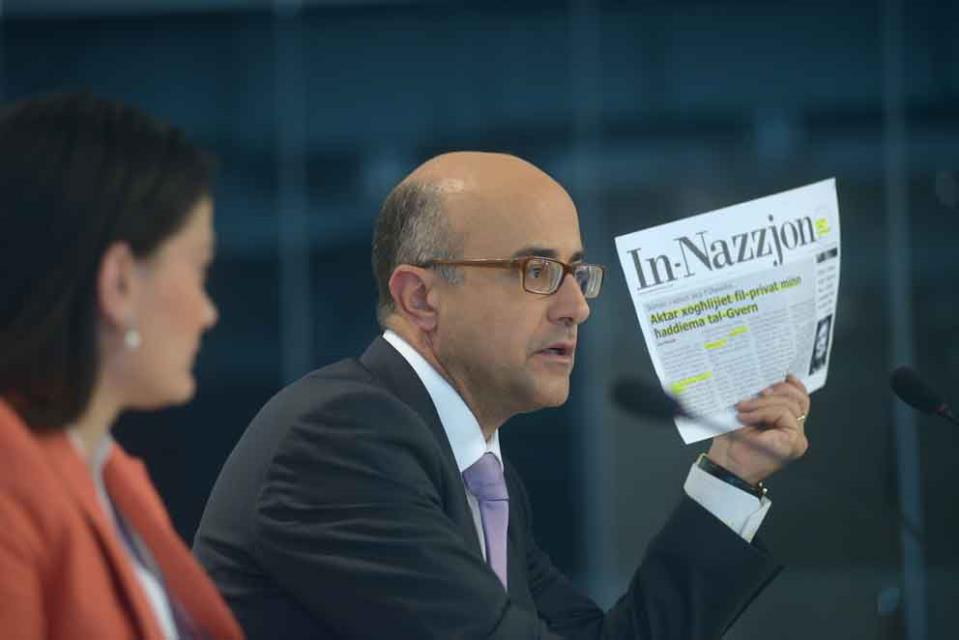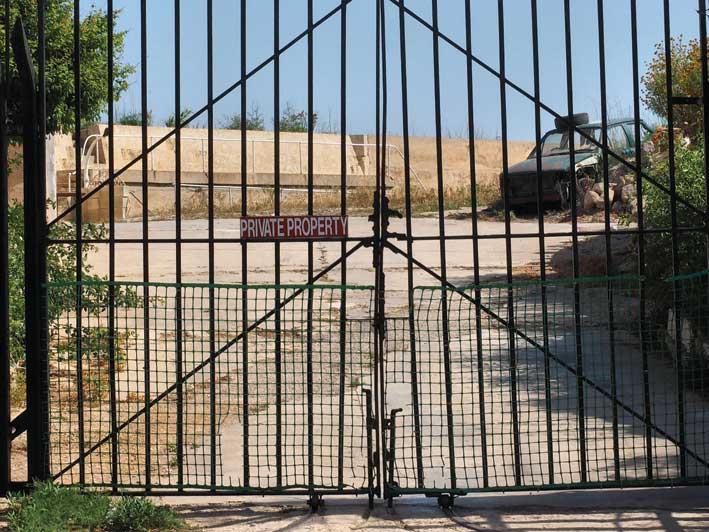Illegally occupying a historic fort and refusing repeated offers of compromise by the government is apparently not enough for a family that calls Fort Binġemma home: the site is now also being used as a restaurant.
Illegal development has also taken place at the fort in recent years, prompting Mepa to issue an enforcement notice in 2013. And the architect involved, as Mepa's website shows, is none other than Labour MP Charles Buhagiar.
At present, there is little to indicate that there has been any progress in the government's efforts to reclaim the site - a Grade 1 scheduled property - restore it and open it to the public: if anything, recent developments are only making matters worse.

The fort turned cow farm, with the government's blessing
As it happens, the family occupying the site had originally received the authorities' blessing to move into it.
The fort forms part of the Victoria Lines fortifications, which the British built along a natural fault line in the 19th century to strengthen Malta's northwest front in the event of a land invasion. It is one of three isolated strongholds built along this line, together with Fort Musta (Mosta) and Fort Madalena in Madliena.
As it turned out, training exercises soon revealed that the Victoria Lines were of dubious defensive value, and they were abandoned early in the 20th century. However, after the Second World War, Fort Binġemma was used for espionage purposes, including the training of Albanian insurgents in a failed bid to overthrow the country's communist regime.
The government gained possession of the site when the British forces left the island, and in 1981 - shortly before a general election took place - the Labour government of the day leased it to Gaetano Buttigieg. Mr Buttigieg used the historic site to rear cows and as a private residence for his family.
The lease expired in 1997, but was subsequently renewed annually, first by the Labour government of the day and subsequently by successive Nationalist governments.
But starting from 2002, the Environment Ministry made a number of requests to the Government Property Division, asking for the fort to be vacated and allocated to the Ministry's Restoration Unit. In 2005, Heritage Malta announced that it would take over the fort and restore it as part of a national fortifications heritage trail.
Despite the requests, the lease continued to be renewed, but in the meantime, the government was seeking to reach some form of compromise with Mr Buttigieg. Its attempts, however, proved unsuccessful, and the lease was terminated in May 2009.
But Mr Buttigieg and his wife refused to budge, even depositing rent in court.

Holding the fort
Forts may be designed to keep invaders out, although the prospect of an elderly couple keeping government officials at bay may appear to be somewhat ridiculous. Yet this is exactly what happened.
On two occasions, officials from the Government Property Department and from the Superintendence of Cultural Heritage attempted to enter the site, only to be blocked by a metal gate and guard dogs lying in wait behind it, even though Mr Buttigieg had been informed of their visit.

Subsequently, Jason Azzopardi - then the Parliamentary Secretary responsible for land - personally went on site, only to receive the same treatment as that meted out to the officials.
But in spite of Mr Buttigieg's intransigence, the government of the day actually went out of its way in a bid to accommodate him, as The Malta Independent discovered in 2012 when it contacted a spokesman for Dr Azzopardi about the case.
The decision was apparently made on compassionate grounds: while the government had every right to press for an eviction, it chose not to do so due to Mr Buttigieg's advanced age and state of health.
The previous government had originally offered a home in central Rabat to Mr Buttigieg and his wife, but the site was deemed unsuitable since Mr Buttigieg was a wheelchair user and most of its facilities were at first floor level. The Housing Authority proved unable to provide suitable alternative accommodation.
Ultimately - "in an effort to accommodate Mr Buttigieg and cause minimal disruption to his way of life at such old age" as a Ministry spokesman put it at the time - an agreement was reached to separate the Buttigieg "residence" from the rest of the fort.
As it happens, the couple's living quarters were a building separate from the fort's main structure, and the plan was to allow them to continue living in it for the rest of their lives. This building would have been cordoned off with a wooden fence, providing them with a small yard: the government obtained a full development permit to build this fence in October 2011.
The plans would have allowed the rest of the structure to be opened to the public, and paved the way for the site's restoration.
But after initially agreeing to the plans, Mr Buttigieg refused to cooperate, bringing up various excuses to refuse access to government officials. Government officials paid several visits, only for Mr Buttigieg to fail to show up.
Mr Buttigieg has since died, although his wife Josephine continues to occupy the fort. The fence remains unbuilt.

An MP gets involved
While Labour MPs in Opposition had asked a number of parliamentary questions about the curious case, there have been no developments in recent years. But Ms Buttigieg and her family have not remained idle, as an illegal development has been flagged by Mepa.
In an enforcement notice issued in 2013, Mepa notes that there was an illegal development consisting of "the levelling of land and the placement of a concrete platform; and the construction of two brick walls, one four courses high and approximately 7m long, and the other three courses high and seven metres long."
It is this enforcement notice that identifies Rabat MP Charles Buhagiar as the architect involved: a government MP, therefore, has apparently overseen illegal development on a historical site on behalf of squatters that are occupying it illegally.
The secret restaurant
But, as explained above, the Buttigieg family went one further in exploiting the site they should have vacated years ago for commercial purposes.
The site is being used as a restaurant of sorts, as confirmed to The Malta Independent by people who have dined at the historic site in a staff party of sorts, against payment.
So far, The Malta Independent has been unable to confirm just how often the site has been used as a restaurant - finding details about an illicit operation is, unsurprisingly, not a straightforward process - but an extensive kitchen has been set up on site to cater for large numbers of people.
Such an operation would, of course, be illegal, even if the Buttigiegs were the legal owners of the site.
The site itself would require the necessary permits to serve as a food and drink establishment where cooking is allowed, and the actual restaurant would need to be licensed with the Malta Tourism Authority. Licensed sites are subject to inspection to ensure they are up to standard, unlicensed ones operating under the radar obviously cannot be.
Tax evasion, of course, would be another concern.
The restaurant operation appears to be a family affair, with various relatives sharing the work that needs to be done. As far as restaurants go, according to our source, the fort's offerings are somewhat unimpressive, although the historic setting may arguably make up for shortcomings elsewhere.
But an unusual piece of décor did attract attention: a caged European robin, a species protected by law. An illegally caught bird in an illegal restaurant on illegally occupied land: a controversial choice, perhaps, but also very appropriate.